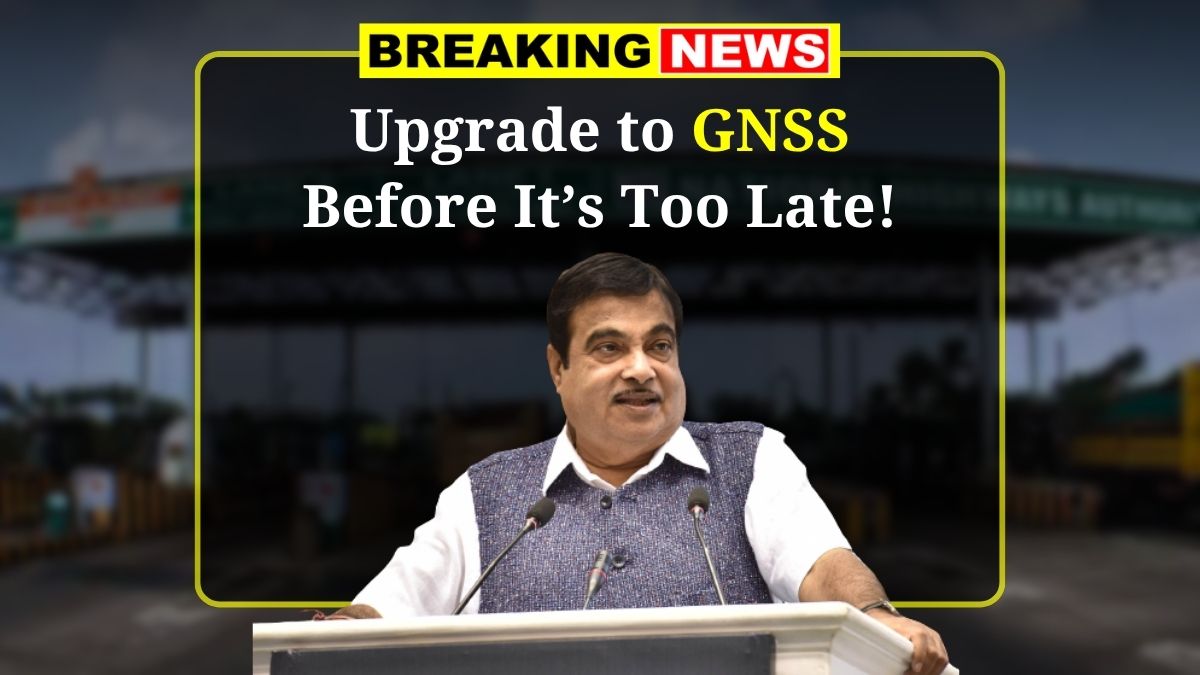GNSS Toll System – India is making a major move from the FASTag toll system to the new GNSS-based tolling system, and if you’re a vehicle owner, it’s time to get on board. The GNSS (Global Navigation Satellite System) promises smoother, smarter, and more efficient toll collection by using satellite technology instead of the traditional RFID tags. If you don’t switch in time, you could end up facing hefty fines—so here’s everything you need to know to make the transition easy.
What is GNSS Tolling All About?
The GNSS toll system uses satellite signals to track your vehicle’s movement and charges you tolls based on how far you actually travel on tolled roads. That means no more slowing down or stopping at toll booths. The technology helps reduce traffic jams, shortens travel time, and ensures a more accurate and fair tolling system.
Why GNSS is a Game Changer
There are several benefits of moving to GNSS tolling. First off, you won’t have to deal with toll booths anymore—toll collection happens automatically as you drive. Charges are based on the distance you travel, not on flat rates at toll plazas. This ensures a more transparent tolling process. It also helps cut down congestion and emissions since there’s no stop-and-go traffic at toll points. Overall, it’s a win-win for both commuters and the government, as the system offers better tracking and increased revenue efficiency.
How to Shift from FASTag to GNSS
Switching from FASTag to the GNSS system isn’t complicated, but it does require a few important steps. Start by getting a GNSS-enabled device from an authorized dealer. This device will track your travel distance and enable toll deductions. Once you’ve got the device, you need to register it through the official online portal by entering your vehicle details.
After that, link your bank account or wallet so that toll payments can be automatically deducted. Make sure your device is correctly installed in the vehicle—do a test run to confirm it’s working as expected. And don’t forget to check your account regularly for toll transactions to keep track of charges.
Tips to Make the Transition Smooth
To make the switch as hassle-free as possible, ensure your personal details and vehicle information are always up to date. This helps avoid any issues with toll deductions or notifications. Also, stay connected with official government updates so you’re aware of any changes in deadlines or processes. Being proactive now will save you from unnecessary stress later.
FASTag vs. GNSS – What’s Different?
The old FASTag system worked using RFID tags and toll booths. It was a prepaid model where you loaded money and paid at fixed points. GNSS, on the other hand, uses satellites and works on a postpaid model, where tolls are calculated based on how far you drive on tolled roads. This makes GNSS more accurate and fair. The system also brings in better transparency and cuts down on manual intervention, making toll collection smoother and faster for everyone.
Got Questions? Here’s What You Should Know
A lot of people are still trying to wrap their heads around how GNSS tolling works. Simply put, GNSS is a satellite navigation system that is already used globally for various location-based services. In India, it’s becoming the standard for toll collection. To register, just go to the official GNSS tolling portal and follow the process—it’s quick and straightforward.
Yes, GNSS is mandatory, and FASTag is being gradually phased out. That means you won’t be able to use FASTag for toll payments anymore, so making the switch is necessary to stay compliant and avoid penalties. Only authorized dealers can provide GNSS devices, so make sure you’re getting it from a certified source.
What’s the Bigger Picture?
With GNSS tolling, India is stepping into a more digital and eco-friendly future. It’s not just about tolls—it’s about improving the overall driving experience. There will be fewer stops, faster commutes, and more accurate charges. The system is also better for the environment as it reduces idling and unnecessary fuel burn at toll booths. Plus, the government will have better tracking and reporting of toll revenue, which can be reinvested in better road infrastructure.
Preparing for the GNSS Rollout
Now’s the time to act. Keep an eye on transition deadlines announced by transport authorities. Make sure your vehicle has the right GNSS technology installed, and get everything registered before the final switch happens. The smoother your setup now, the better your experience on the roads later.
Embrace the Change
Switching to GNSS isn’t just about following rules—it’s about enjoying a more seamless and modern tolling system. You’ll save time, avoid penalties, and help the country move toward smarter transportation. So don’t wait—get your GNSS setup ready and drive into the future with confidence.
Disclaimer
The information in this article is based on current updates available at the time of writing and is intended for general awareness. Readers are advised to refer to official government portals and notifications for the most accurate and updated details regarding GNSS toll implementation in India.
Also Read:
 Landlord Rights : Big Relief for Property Owners – Court Ends Forced Occupation by Tenants
Landlord Rights : Big Relief for Property Owners – Court Ends Forced Occupation by Tenants




